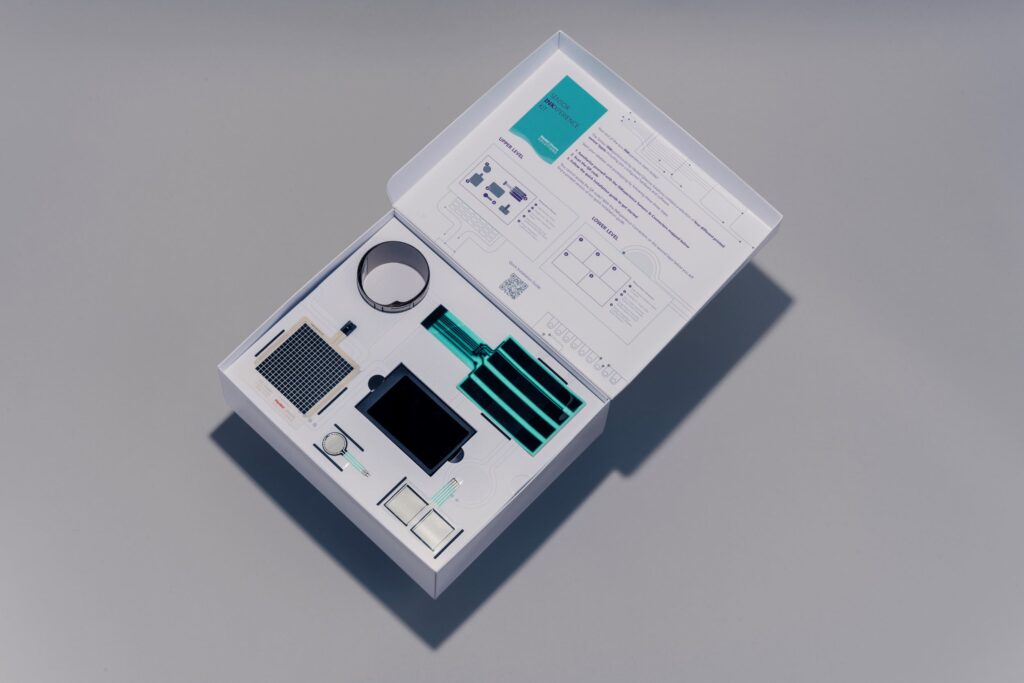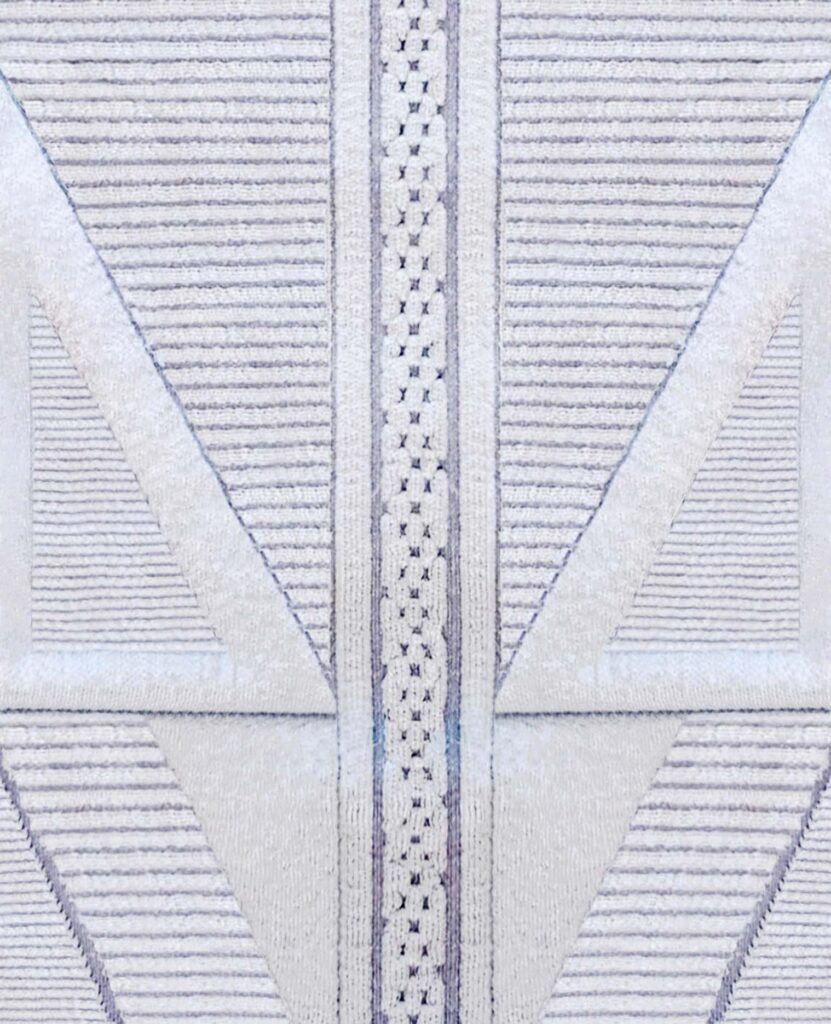
Smart textiles for health and wellbeing are becoming both more diverse and interconnected. Three key market segments—home healthcare, healthcare facilities and work environments—are worth noting. Home healthcare has come to dominate the wearable medical device market globally, with an estimated 54.5 percent share in 2021, according to a report by Grand View Research. When considered in conjunction with remote patient monitoring, this amounts to around 70 percent of the market.
Hospital and healthcare facilities are broadening their approach to smart textiles, looking at patient care, but also at how they could be more sustainable and help to address wider environmental issues in the medical arena. The third trend is in workwear, where the technology is providing diagnostics to help prevent accidents in the workplace and to offer more support for worker safety in their particular environments.
Home healthcare

The pandemic provided the impetus for wearables in home healthcare driven by the need to keep patients at home and out of hospitals as much as possible. This has continued with patients being monitored at home rather than hospital, with rehabilitation also a growing area for longer-term care under supervision.
At the LOPEC trade show in March, German multinational Henkel plans to showcase their growing portfolio directed at digital healthcare and smart surfaces, including a sensor demonstrator for healthcare patches as well as smart diaper applications. Engagement with engineers, designers and product developers is essential when launching new developments in the health and medical sectors. Recognizing this, Henkel is launching the INKxperience Kit.
The kit includes different sensor technologies for leak detection, a printed non-contact liquid level, a printed single and multi-zone force sensor resistor (FSR) sensor and a printed Positive Temperature Coefficient (PCT) heater. This is designed to allow IOT engineers, developers and creatives to explore and experiment with printed electronics. In addition, Henkel will demonstrate a variety of solutions for automotive uses, such as printed heaters.
Hospital and healthcare facilities
An estimated 2.5million people suffer from pressure injuries, or bed sores, in the U.S., while a 2015 report by the Nursing Home Law Center estimated that 1.2million cases were acquired in hospitals accounting for 31.6 percent of hospital-acquired conditions at that time. Rehabtronics, a Canadian provider of rehabilitation products, has developed a neurostimulation device designed to help prevent the condition, with the U.S. Food and Drug Administration (FDA) providing 510 (k) clearance for the Prelivia device. The founders saw an opportunity to bring its neural rehabilitation discoveries into clinical practice to help patients recover from stroke, spinal cord and other neurological injuries.
“Prelivia offers a much-needed alternative to patients at risk for bed sores and their care givers who are required to turn patients every two hours to prevent these injuries,” said Dr. Rahul Samant, Rehabtronics CEO. The device works by continuously stimulating blood circulation to minimize tissue damage, achieving this without causing muscle fatigue.
The Prelivia patches are placed on the patient’s at-risk area where they deliver a painless intermittent electrical stimulation to the affected tissue using proprietary electrodes and a wireless stimulation device. Because there are no time restrictions, it can be used for long-term bedridden and chair-bound patients with 98 percent reporting it to be comfortable with no disruption to sleep.
Reducing risk at work
The Quebec government in Canada has set up the Commission des normes de l’équité de la santé et de la sécurité du travail (CNESST) to ensure worker’s rights as well as safety and compensation. According to CNESST data, work-related traffic accidents are the leading cause of accidental death at work. A study conducted on data from more than 8,000 workers who received compensation from the CNESST following such an accident in the period between 2000 and 2008, revealed that over 83 percent were the drivers of the vehicles involved.
Additional studies have concluded that driver fatigue is the most significant factor among the range of risk factors identified. Early warning systems are the most direct way to reduce risk, including heart rate and breathing monitoring that can indicate safety risks.
A team headed by IRSST and Groupe CTT are engaged in a research project that uses sensors to detect vital signs without direct skin contact, instead integrating them into the vehicle seat cover which is connected to a microprocessor. An algorithm will be developed to convert the signals detected into biometric data, while filtering out noises such as body movements. Post-processing and formatting of this data could train a machine-learning algorithm to determine the stages of drowsiness while driving.
The study will consolidate knowledge on the development of biometric sensors, using smart textile technologies. It will also provide a better understanding of the biometric variables that identify the signs of drowsiness while driving. The research team plans to develop a suitable method to obtain useable biometric data and to implement a tool to detect drowsiness in workers who are driving. It will also seek to validate the processing of biometric signals as a predictive measure of drowsiness and deterioration of driving skills.
Designing for comfort

Whatever the application, one of the most crucial factors in wearables design is comfort. Cassie Henderson, a final year Textiles Masters student at the Royal College of Art in London, is focusing on this issue for her final collection of knitted textiles. Yarn selection is crucial in order to find yarns that marry performance with comfort that can range from tactile qualities to wicking moisture away from the body.
The primary goal of the work is identifying knit structures that will address specific challenges to wearer comfort and the wearability of the garment. Henderson is producing textiles that incorporate tubing to accommodate conductive wires or yarn, and small pocket sleeves to house hardware. Protective padded areas are strategically placed to soften contact with the skin, particularly for elderly and other wearers with fragile skin.
The aesthetics run in parallel, understanding that for today’s consumer a wearable has to perform, look and feel good. Design is an important part of engagement and brands recognize this with the student already working for clients UpLyft and aiKNIT on textile designs for their rehabilitation wearables.
Health and wellbeing continues to be one of the strongest areas for smart textiles and wearables. Although this article looked at three different segments, many of the developments emerging can be used directly or adapted for use in other areas—wearable de ices used for pain relief or insulin management, for example. Core functions of sensing, monitoring and data collection are now just the starting point for wearables in these sectors, with purpose and design being given increasing attention.
Dr. Marie O’Mahony is an industry consultant specializing in smart and advanced textile technology and market trends. She is an invited presenter at LOPEC2023 speaking on ‘Smart textiles for health and wellbeing – challenges and opportunities,” 1st March 2023.
 TEXTILES.ORG
TEXTILES.ORG


